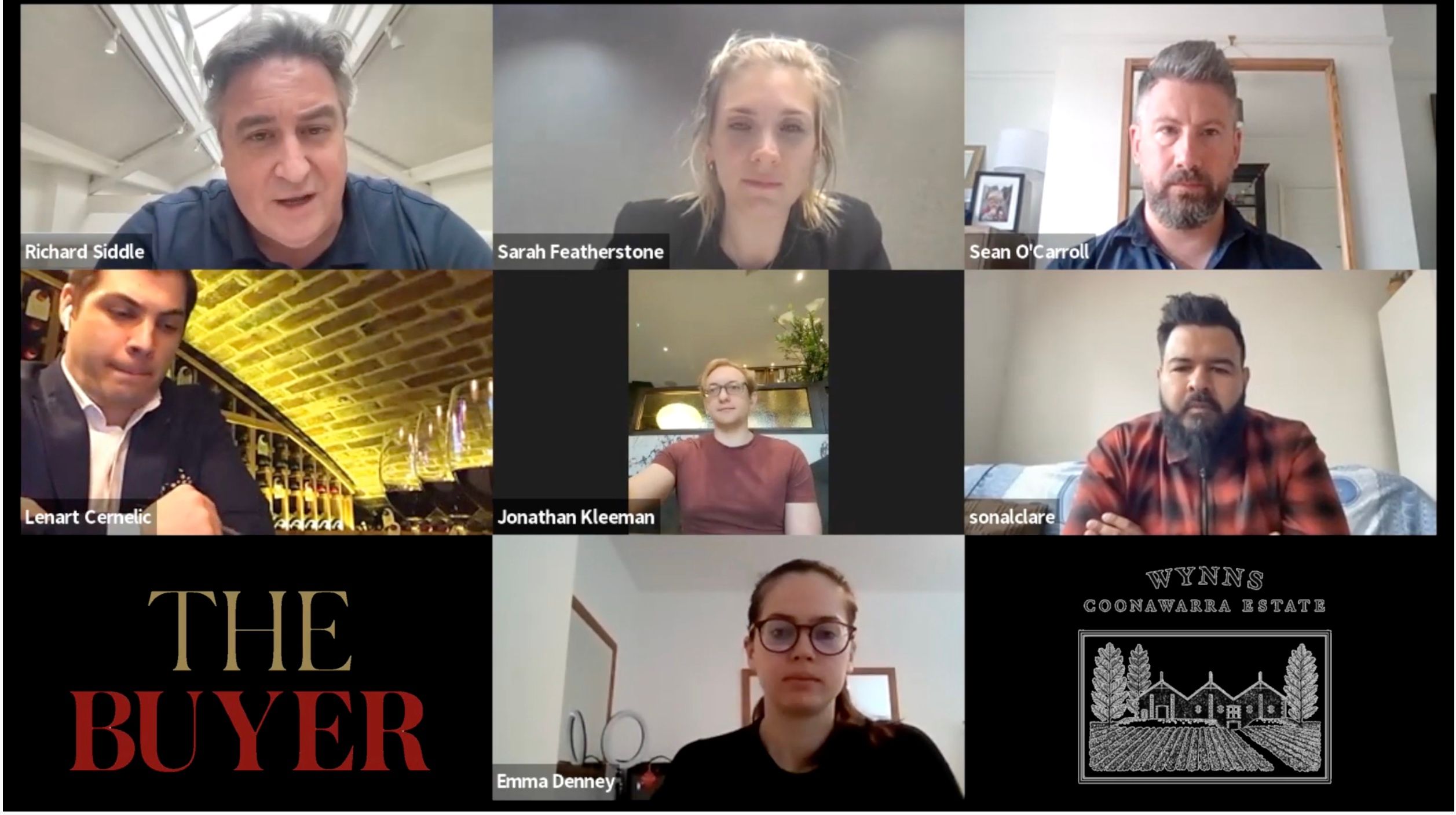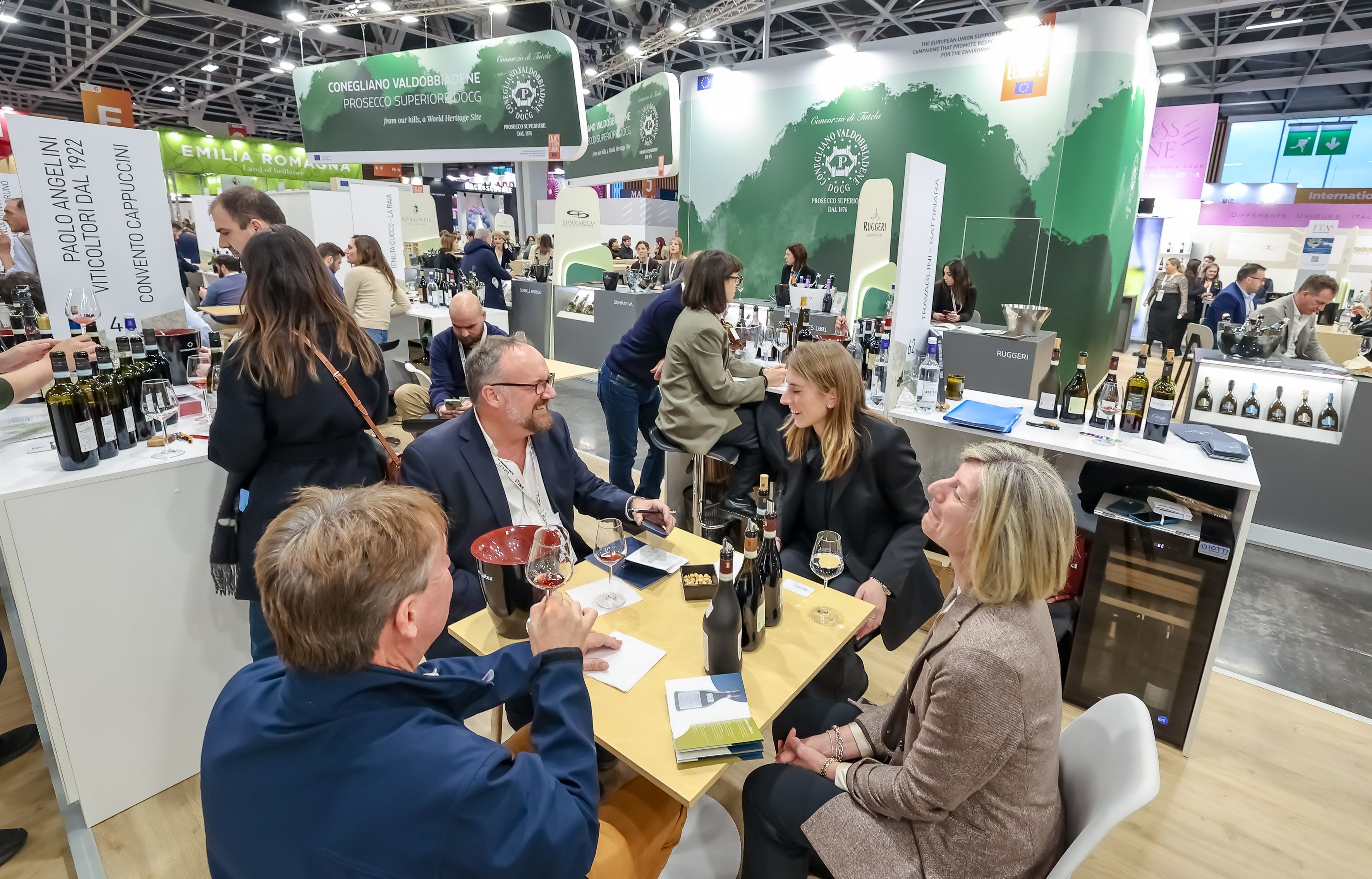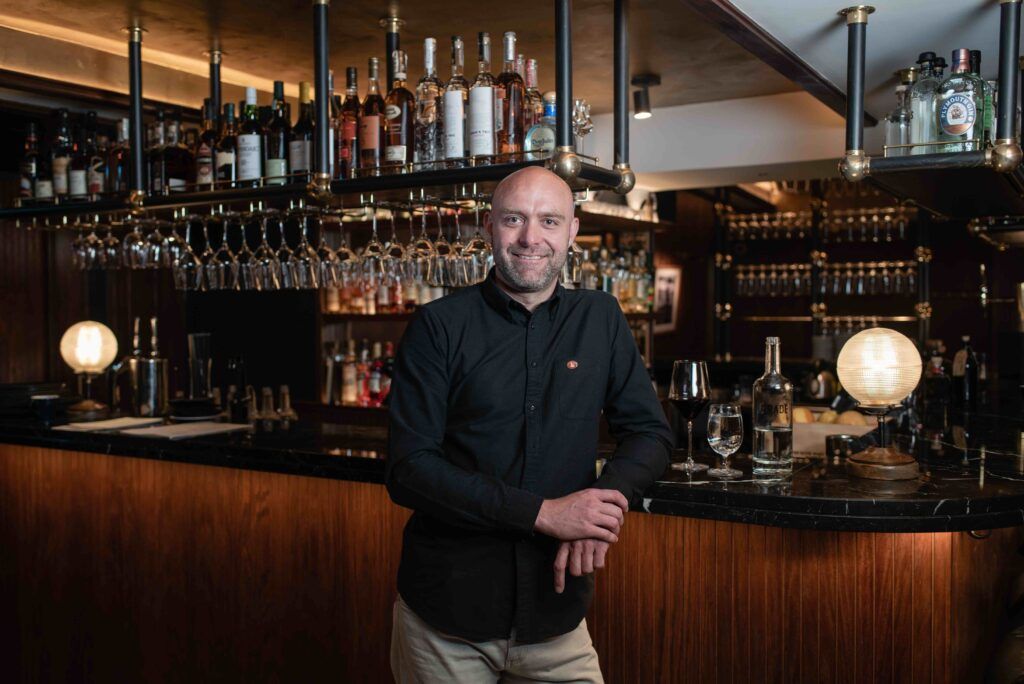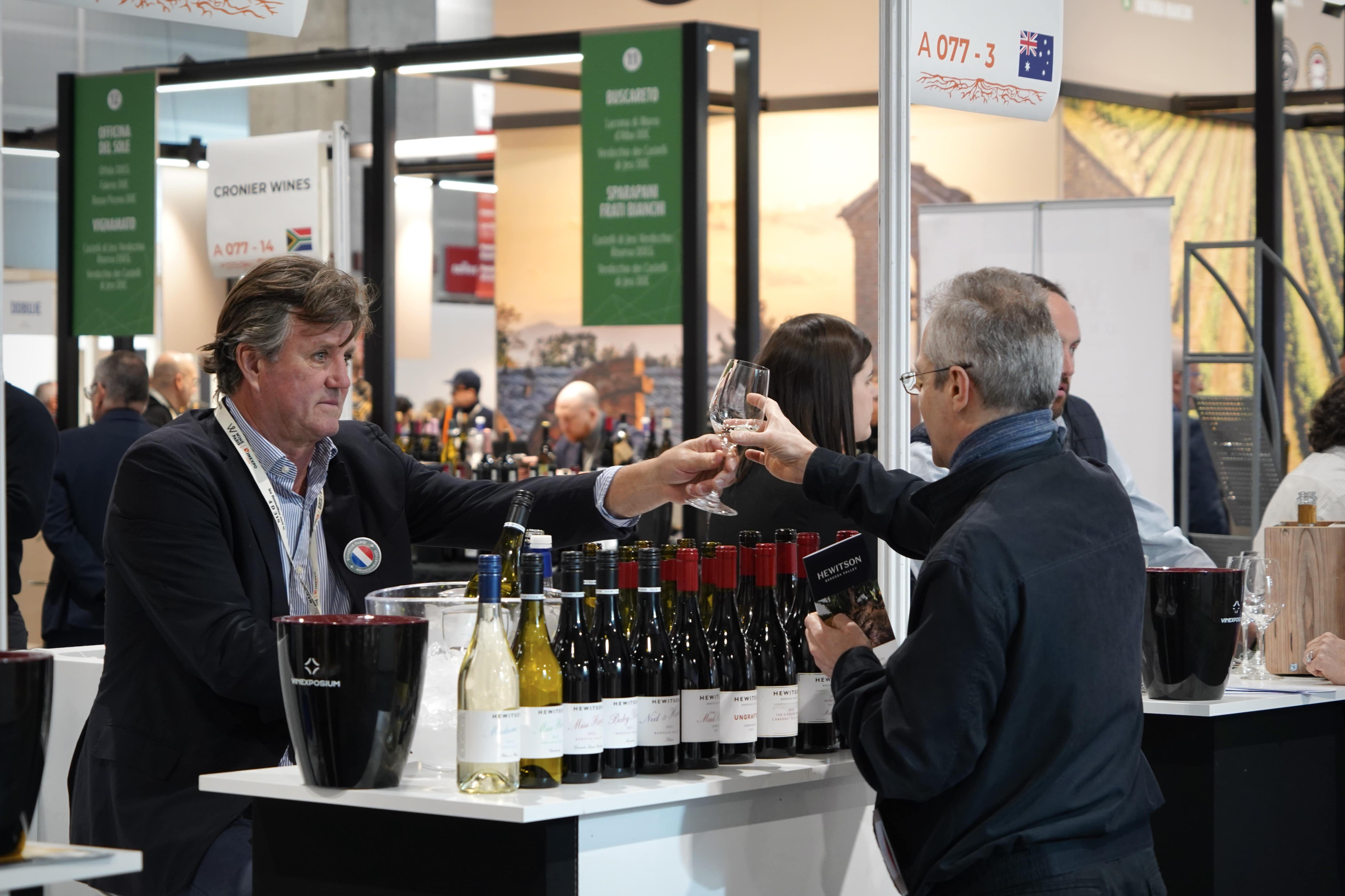Described throughout the debate as one of the world’s “classic wine regions” there was a lot of love, trust and support for Coonawarra wines from our sommelier panel. Here’s part one of our two part report.
To help assess the potential for premium Australian wines, and Coonawarra in particular, The Buyer invited the following leading buyers and sommeliers to take part in our recent Zoom debate. The panel included:
- Sonal Clare: general manager, The Wilderness Restaurant
- Emma Denney: assistant head sommelier, The Clove Club
- Jonathan Kleeman: head sommelier, Restaurant Story
- Lenart Cernelic: manager, JB Parkers
- Enrico Marcolungo: store manager, Shrine to the Vine
To help share insights from Wynns and where it sits in the overall Treasury Wine Estates strategy for premium Australia, the session also included:
- Sarah Featherstone: brand manager for Wynns Coonawarra Estate at Treasury Wine Estates
- Sean O’Carroll: business manager for on premise at Treasury Wine Estates.
(Click here to watch the full debate)
Australia’s ambition to get more of its premium wines into the world’s best restaurants is a bit more of a recent goal than when Wynns first started making wine in the 1890s. But the vision of its founding father, Scottish pioneer, John Riddoch, who first planted vines on the estate in 1891, is still very much alive today, with John Riddoch proudly leading the way as the name on its flagship and most awarded wine.
It may not have been until the 1980s that the real potential of Coonawarra and the influence of the Wynns Estate was felt on premium wine in Australia overall, but over the last 40 plus years this small, but very significant wine region has become key to how Australia as a whole is seen around the world. But crucially the wines being made today still come from many of the same vines that produced the grapes for its first vintage in 1896.
It was noticeable, for example, how quickly the sommeliers who took part in the debate signed up to the session. Even if they were not selling many, or any, of Wynns’ wines the chance to taste, talk and discover more about what Coonawarra and Wynns could offer was an opportunity they were keen to take up.
The Wynns and Treasury team were keen to discover how much understanding there is about the various styles of premium wines from different regions – particularly in southern and south east Australia? How well known is Coonawarra and what it stands for? What are the barriers for premium wine out of Australia and Coonawarra specifically. What is the future for these wines in the premium on-trade?
Coonawarra’s potential
The region of Coonawara in south east Australia might have less than 6,000 hectares of vines, and be less than 400 km2 in size, but its role in Australia wine is so much bigger than that. Particularly in demonstrating what the country can do in terms of super quality wines, but, crucially at price points that are so much more competitive than some of their more illustrious peers in the Old World. Not bad for a region that has a population of around 130 people.
Sean O’Carroll, who heads up the on-trade business channel at Treasury Wine Estates, describes it as being like an island within an island as it is situated half way between Adelaide and Melbourne, some 380km south of Adelaide and 80kms inland. It therefore benefits from the strong cool breezes that rip in from the sea that help with a long ripening season and acidity in the grapes.
There is more of a similarity with the climate in Bordeaux than elsewhere in Australia, he adds. It is might be sunnier and drier, but the average temperatures in the growing season are almost the same, with Bordeaux around 17.4 celsius and Coonawarra 17.2 C. “There is that potential to retain that freshness and acidity.”
The key to the wines being made here, says Wynns UK and EMEA brand manager Sarah Featherstone, is the terra rossa soils that dominate the landscape. Wynns sits on around 80% terra rossa soils that all add to the richness and texture in the wines, she adds. “It definitely gives more of an elegant expression which our winemakers love to work with.”
Whilst it is famous for the quality of its Cabernet Sauvignons the first vines planted in Coonawarra in the 1980s were actually Shiraz and it too has a long, successful history in the region, stresses O’Carroll.
In fact most of the oldest wines in the region are Shiraz, with Cabernets success coming much later. Wynns’ for example can date its Michael Shiraz wine back to the 1952, whereas the first vintage of its now iconic John Riddoch wine was not made until 1982.
Sommeliers on Coonawarra
(Click below for Restaurant Story’s Jonathan Kleeman on challenges and opportunities for Coonawarra wine region)
The Coonawarra is very much a region on the sommeliers’ radar, says Jonathan Kleeman, head sommelier at The Restaurant Story: “I always think of it as being quite separate. It has a distinct terroir because of the terra rossa soils. It think it always makes you think of Cab, and is synonymous with Cabernet Sauvignon.”
The issue he has with Coonawarra is more around not seeing as many wines from the region as he did earlier in his career, compared to what he is seeing from elsewhere in Australia. “A lot of exciting things have happened in other parts of Australia, like Mornington Peninsula and parts of Victoria and newer areas that have taken a little bit of the focus.”
It’s not a case of Coonawarra doing anything specifically wrong with its wines, he stresses, it’s more a case of it carrying on doing what it does best, at a time when other regions have been shouting and talking about the wines they are making. “It has not done anything new that has caught the eye. Sommeliers are as bad as other people. We like things that are new and shiny. We like different and special. That can sometimes be an issue as well. But you do think of it as having its own terroir and own distinctive style and most sommeliers would know that off their top of their head and recognise that.”
It’s not a case of sommeliers not wanting to talk or list Coonawarra, it’s perhaps more of a case of other parts of Australia working harder to get their wines better known, he adds.
He also says sommeliers are looking to fill gaps being left by the shortage and cost of Burgundian wines, hence the big rise in New Zealand Sauvignon Blanc and wines from Oregon, as they are “other options to that style that people are looking for”. Which for Australia has meant much more demand for “finer, lighter” styles of Grenache.
Enrico Marcolungo, who manages the Shrine to the Vines retail store that is part of the Noble Rotr restaurant business, says Coonawarra stands out for having a real “identity and is very recognisable”. “It’s a classic with lots of strong points.”
But he also agrees with Kleeman in that it is now having to compete against wines that are seen as more Burgundian in style which is what some sommeliers and wine buyers are increasingly looking for as well as younger wine drinkers who are prepared to spend more on wine.
“People in their early thirties are forming their palate on what is trendy now rather than on the classics. So more on Burgundy and the Jura than on Bordeaux or Coonawarra,” he adds.
That said Coonawarra’s strong sense of place and unique terroir is a “really strong selling point”. “That’s where the potential is.”
Changing perceptions
Sonal Clare, general manager of the The Wildnerness Restaurant Birmingham, says Coonawarra’s biggest calling card is its terra rossa soils and that is one of the “important factors” he would look to pass on to guests. The fact the region can make these soft, elegant red wines that are in stark contrast to what people might naturally assume they are going to get from Australia.
It is not just a Coonawarra story either, says Clare, with similar steps being taken right across Australia, in Margaret River, Adelaide Hills, Eden Valley and others. That’s where Coonawarra needs to be positioned, he says.”Perhaps we can be doing that much to inform them that there is so much more available.”
In terms of encouraging guests to try Coonawarra wines it is very much a hands sell and an opportunity for you as a sommelier to take them on a bit of a journey and explain to them that these are wines that come from “unique soils and climate and they are not the full on extracted reds” that they might assume come from Australia, says Clare.
Marculungo says most of the wines he sells at Shrine of the Vine are a hands sell where you are given the freedom to suggest wines and ideas to customers. Coonawarra would definitely be a region he would suggest if someone came in asking for a premium Cabernet Sauvignon option. “Particularly as California, Napa and Sonoma have become so expensive. This is where Coonawarra can offer better value for money.”
Lenart Cernelic, who managers JB Parkers in Guernsey, says Coonawarra on its own is not enough to get people to buy it.“Guest don’t ask for it by name,” he says. But it is very much a region he would turn to when looking to “upsell” customers. “They like my enthusiasm. It is something unique and that is what you can get across when you describe it to people.”
(Click here for The Clove Club’s Emma Denney on the art of selling higher price wines & what convinces guests to trade up
Emma Denney, assistant head sommelier at The Clove Club, also thinks Cabernet Sauvignon as a variety is a good way to lead guests into Coonawarra. “So it is more try a Cab Sav from the New World rather than look at Coonawarra specifically. I don’t think I have ever had a guest request a Coonawarra Cab Sav, but they will ask me for a Cab Sav or red wine that is excellent value, really high quality, and something they have not had before.”
The fact the Clove Club has got 2 Michelin stars helps, as people are coming for an experience and are “willing to spend a bit more for a better wine”
Classic appeal
Denney says she sees the Coonawarra as one of Australia’s “classic wine regions” that acts as a counterpoint to the “flashier, trendier” wines that have been seen in the London restaurant scene in recent years.
“But for me it is solid, it’s reliable. It’s like in France you have the fun regions like Jura, but Bordeaux is that classical style that sometimes people might think of as boring, but you know what you are getting, it’s quality, it’s stable. For me Coonawarra is kind of like that, but I think it is a little more delicious than perhaps Bordeaux.”
In terms of actual wines then when you think of Coonawarra you think of Cabernet Sauvignon, she adds. “For us it sits quite well on our list.” And it is a great way to direct people to “a classic very special wine from Australia”.
It is that quality and classic image that Denney thinks Coonawarra should really look to own even more than it does.
“It is a region for true wine enthusiasts,” says Featherstone. “In the same way you might seek out a restaurant, you seek out Coonawarra as a wine region to go to. It’s not somewhere you just stumble across.”
(Click here for The Clove Club’s Emma Denney on why Coonawarra should make more of its classic wine region status)
Better marketing
Lenart Cernelic thinks there are “two conversations to be had” when it comes to Coonawarra. Firstly it’s a region that sells because sommeliers have the skills and knowledge to sell it, but it is not a region that guests would readily seek out when looking to buy a premium wine. It needs “a bit more love and attention” to make the most of what it has.
“There’s nothing like Coonawarra Cab. Anywhere in the world. It is unique. You can pick it out on the nose, even without tasting it. There is also nothing like a Salta Malbec, or Eden Valley Riesling. But it’s not being marketed in that way. I think that needs to be done better, particularly with wines as unique as these are, the region should be marketed better.”
Particularly as it stands out so much within Australia itself as a genuine classic winemaking region, he adds.
The fact Coonawarra has so many old vines going back over 100 years should also be a key part of any marketing story, says Kleeman. It is something that he looks for and certainly talks to with his customers and it is only going to get more important. “It gives the wine a talking point.”
Marcolungo also sees old vines as being “one of the most effective marketing tools” there is at the moment. “It definitely adds interest to the conversation when you are recommending wine.”
O’Carroll at Treasury says it is great to hear the sommeliers’ views and how strongly they regard Coonawarra as a classic wine region of the world and how Wynns’ wines are a strong representation of what it can produce.
“It’s never going to be something new and shiny. But there is definitely a place for these classic wines. What surprises a lot of people is the elegance and delicate nature of a lot of the wines,” he says.
It’s also good to hear, he says, that is a region that interested wine consumers have yet to discover and the potential that then offers. But he also accepts it is up to Wynns and Coonawarra as a whole to be playing its part in that.
- In part 2 of our report we look at the different styles of Wynns wines from Coonawarra, where the sommeliers think they would fit in the UK market what they think overall of the premium Australian wine market.
- You can find out more on Wynns here.









































